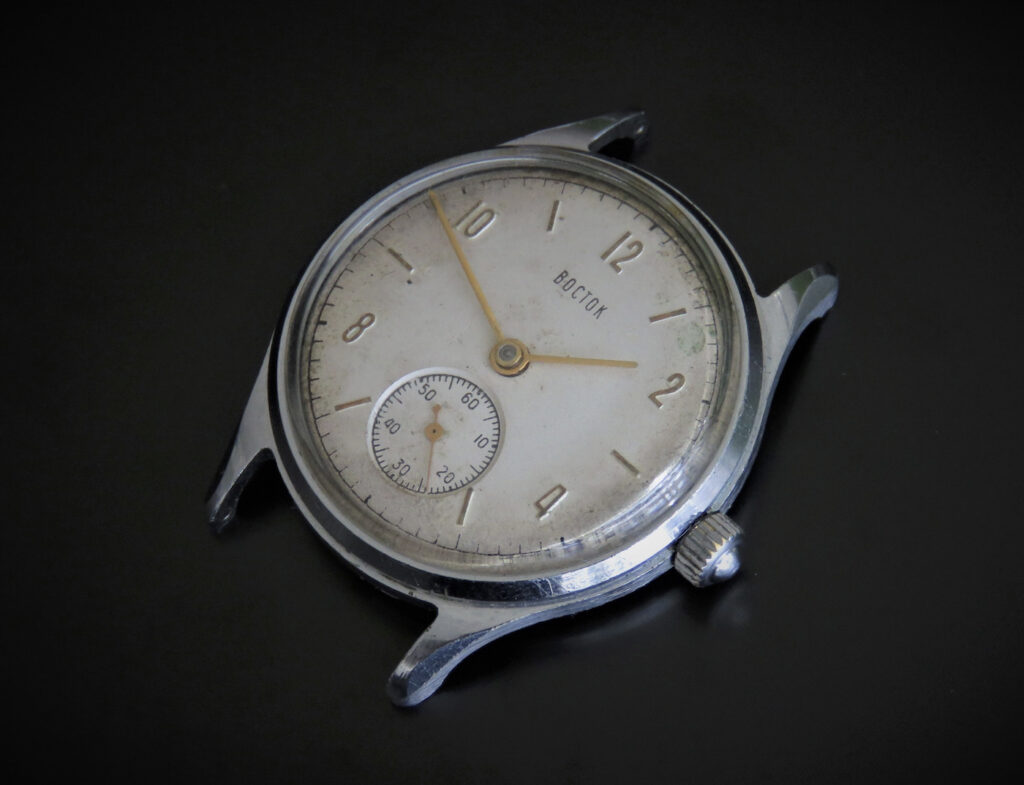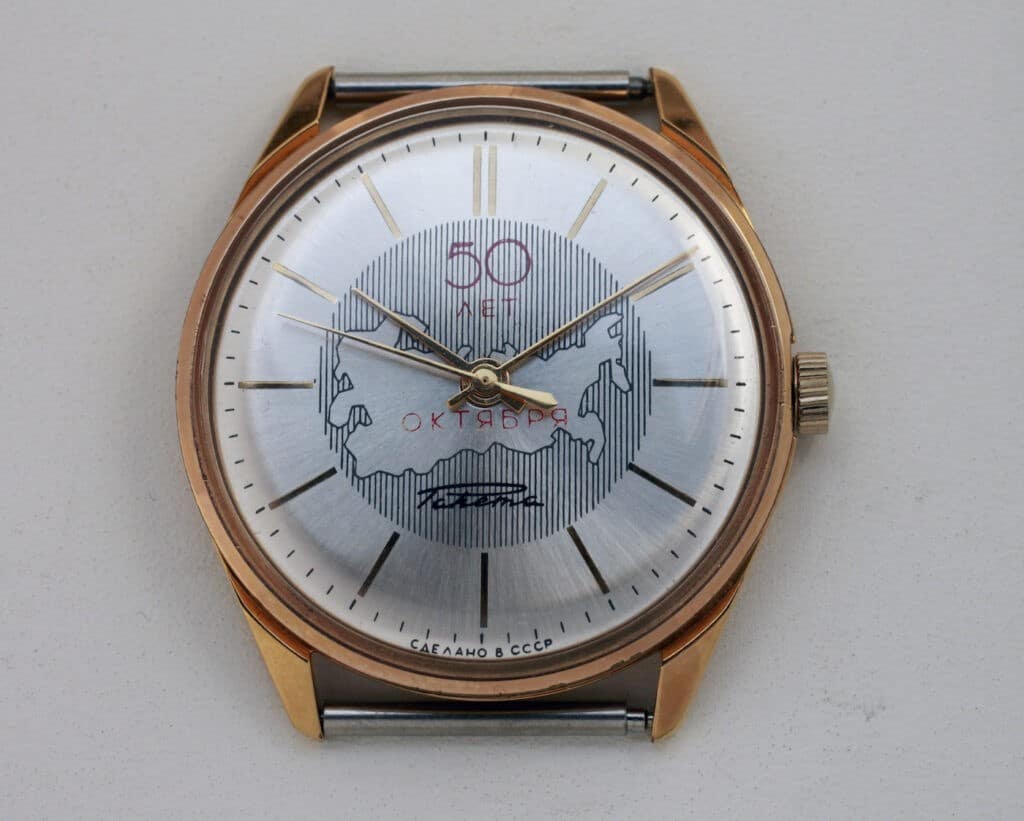It’s likely that you’ll begin by looking at timepieces from Switzerland and Japan, which are both popular selections among collectors. Furthermore, we’re constantly reminded that these two watchmaking behemoths played a crucial part in the evolution of the entire watch business, which makes perfect sense. To commemorate their historic achievements (did you know that the Omega Speedmaster was the first watch to land on the moon?) to an almost inexhaustible stream of vintage re-issues, the Swiss and Japanese watch companies have done an extraordinary job of incorporating their heritage into their brand identities, and the results are breathtaking. The fact that many watch enthusiasts interested in wading into the sea of vintage watches gravitate toward brands with a long and well-documented history, such as Rolex, Omega, and Seiko… only to scramble right back out after discovering how high the prices for these vintage pieces.
Even though it may take some time, you will undoubtedly come across the bizarre and fantastic world of Soviet timepieces at some point in your journey. You should do your research before going because the history of Soviet watchmaking and the watches created during this period (from the early 1930s through to the collapse of the Soviet Union) are so foreign and unfamiliar that you should not go into the experience without having done your research.
Watchmaking in the Soviet Union was a state-run and centrally controlled enterprise with all other forms of manufacture. Whether for civilians, professionals, or the military, the watches produced were intended to be instruments, and they were constructed in that manner. This is a fundamental difference between the watchmaking traditions of countries such as Switzerland and those of other world areas. Indeed, many watches were produced as tools, often under contract with militaries and governments worldwide. However, watches were also primarily manufactured to be sold on the open market, allowing for far greater flexibility in terms of design and complexity and, ultimately, invention. To be precise, Soviet watches were anything but ordinary – take a look at some of our favorites in the gallery below to see what we mean!
Kirova Type 1

Why not begin at the beginning of the history of Soviet watchmaking rather than at the conclusion? In the late 1930s, the Kirova Type 1 watch became the first watch to be built entirely in the Soviet Union, with the first examples leaving the manufacturing floor in the late 1930s. In light of the fact that Soviet watchmaking was essentially non-existent in the 1920s, the Soviet Union opted to purchase the entire Hampden manufacturing plant and relocate it to Moscow rather than beginning from the ground up. However, the Soviets did not only purchase machinery; they also purchased everything else, including spare parts and technical skills. Hampden staff were, in reality, transported to Moscow with the machinery, where they spent a year instructing Soviet watchmakers on how to use it.
Contrary to this turbulent history, Type 1 watches continued to be produced continuously until the 1960s, with Zlatoust the last manufacturer to continue producing Type 1 timepieces for the military after World War II. Type 1 watches are distinguished by their history and movement, even though they are available in various styles and types – everything from military timepieces to dive watches. If you’re looking for a location to start your search and are interested in military timepieces, the black-dialed Paratrooper is an excellent place to begin your investigation. Other notable features of the paratroopers include an unusual two-piece “saucepan” case (the bottom of which resembles a cheap cooking pan), radium lumped numerals and hands, and either a stamped or merely painted military record number on the dial (although some examples do not have these numbers at all).
Vostok Precision

During the 1950s, the Shturmanskie had become widely used throughout the service, and it was a dependable source of punishment for Soviet pilots who had a broken wrist. The Neuchatel chronometer trials, a renowned 30- to 50-day event that tested the limits of accuracy in timekeeping devices, were taking place just west of the Iron Curtain at the same time. Businesses from all over Europe (and later Japan) were competing in the trials held in Neuchatel, Switzerland (well, well beyond current COSC certification). However, even though the Soviets had no intention of participating in these trials, they did not want to be left. It was necessary to launch a new movement from the ground up.
Even though it was never certified for chronometer trials, official specifications said that it operated between -10 and +5 seconds per day on average. These clocks came standard with swan-neck regulators, 22 jewels, and a central seconds hand in addition to other features. Despite the fact that the Soviet testing system differed from the COSC certification system, all watches were submitted to a series of tests that included keeping track of the time for ten days in four distinct positions and three different temperature conditions (0oC, 20oC, and 40oC).
Volume: In many ways, the movement is very similar to the Precision. However, it is less precisely tuned (+/- 30 seconds per day). There are a few differences in the movement (different typeface on the movement inscription, additional recess holes for the train jewels) that separate the two timepieces from one another. It had 22 catches and a swan neck regulator, just like the Volna. Still, it was created in much more significant quantities and in a variety of configurations — keep an eye out for the Jubileinie variations, which were built to mark the 40th anniversaries of the Tatarstan and Kazakhstan Republics, respectively.
Slim Watches Vimpel 2209

A four-wheel winding mechanism was featured in the Vimpel (Pennant, after the small flags given to factories to commemorate a successful achievement), which was first introduced in 1961 and branded as the Vimpel (Pennant) (rather than the standard two belonging to the crown and ratchet wheel). This configuration, which had never been seen before, earned the first award at the 1963 Leipzig Trade Fair and was used to power a large number of Pajot dress watches during the following decade. Production was later taken over by the Minsk Luch factory, which remained in production of this caliber until the 1980s.
Consider the 2209 watches go if you’re looking for a vintage dress watch with a modern twist. This was the pinnacle of Soviet watchmaking, and the quality of the 2209 watches was on a par with that of Swiss timepieces. These timepieces are not only available under the Vimpel brand but also under the names Orbita, Poljot De Luxe, Poljot, and even Sekonda and Cornavin. Most of them will be gold plated, but some will be steel as well. The majority of them will have case diameters of 33-35mm and lug widths of 18mm. It is straightforward to find a great sample Vimpel for under $100 – or for less than half that amount for a similar Luch version.


This is a topic that’s close to my heart… Thank you! Where are your contact details though?
This web site certainly has all of the info I wanted about this subject and didn’t know who to ask.
There is definately a great deal to learn about this subject. I like all the points you made.
The next time I read a blog, Hopefully it won’t fail me just as much as this one. I mean, Yes, it was my choice to read, however I really believed you would have something interesting to talk about. All I hear is a bunch of whining about something that you could possibly fix if you were not too busy looking for attention.
After checking out a number of the articles on your website, I truly appreciate your technique of blogging. I saved it to my bookmark site list and will be checking back soon. Take a look at my website as well and tell me your opinion.
After I initially left a comment I seem to have clicked on the -Notify me when new comments are added- checkbox and now each time a comment is added I get 4 emails with the same comment. Is there an easy method you are able to remove me from that service? Many thanks.
This site really has all the information I needed concerning this subject and didn’t know who to ask.
Next time I read a blog, I hope that it doesn’t disappoint me as much as this particular one. After all, I know it was my choice to read, but I actually believed you’d have something helpful to say. All I hear is a bunch of crying about something that you could fix if you weren’t too busy searching for attention.
Great info. Lucky me I came across your site by accident (stumbleupon). I’ve saved as a favorite for later.
There’s certainly a lot to know about this subject. I really like all of the points you have made.
It’s nearly impossible to find knowledgeable people in this particular topic, however, you seem like you know what you’re talking about! Thanks
I seriously love your site.. Great colors & theme. Did you create this amazing site yourself? Please reply back as I’m planning to create my very own site and would like to know where you got this from or what the theme is called. Thanks!
I like this weblog it’s a master piece! Glad I observed this
on google..
hello there and thank you for your info – I’ve definitely
picked up anything new from right here. I did however expertise some technical issues using this site, since I experienced to reload the web site a lot of
times previous to I could get it to load correctly. I had been wondering
if your hosting is OK? Not that I am complaining, but sluggish loading instances times will often affect your placement in google
and can damage your high quality score if ads and marketing with
Adwords. Anyway I am adding this RSS to my e-mail and could look out for much more of your respective interesting content.
Make sure you update this again soon.. Escape room lista